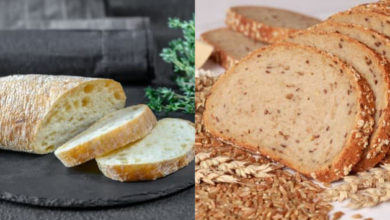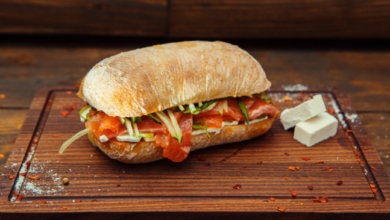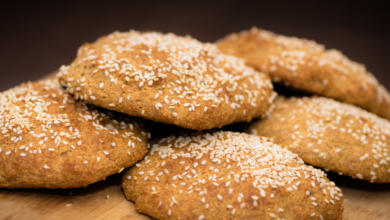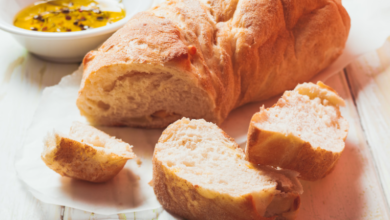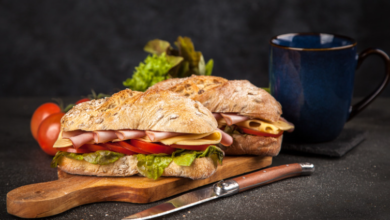How to Know Your Ciabatta Is Cooked: A Few Tips

What To Know
- Determining the perfect moment to remove it from the oven can be a challenge, but with the right techniques, you can master this art.
- Remember, the journey to ciabatta mastery is a rewarding one, filled with the satisfaction of creating a culinary masterpiece.
- Yes, you can reheat ciabatta by placing it in a preheated oven at 350°F (175°C) for a few minutes.
Ciabatta, the iconic Italian bread known for its airy crumb and crispy crust, is a culinary delight that requires precise cooking to achieve its signature characteristics. Determining the perfect moment to remove it from the oven can be a challenge, but with the right techniques, you can master this art. This comprehensive guide will empower you with the knowledge and sensory cues to confidently identify when your ciabatta is cooked to perfection.
Signs of a Well-Cooked Ciabatta
Color
A well-cooked ciabatta should showcase a golden-brown crust. The surface will have an even color throughout, with no areas that are too pale or burnt.
Texture
The crust should be crisp and slightly crunchy, providing a satisfying resistance when you bite into it. The crumb should be light and airy, with visible holes throughout.
Sound
When you tap the ciabatta, it should produce a hollow sound. This indicates that the interior is cooked through and the bread is not dense or undercooked.
Weight
A cooked ciabatta will feel lighter than an uncooked one. As it bakes, the moisture evaporates, reducing its overall weight.
Internal Temperature
Using a meat thermometer, insert the probe into the center of the bread. The internal temperature should reach approximately 200-210°F (93-99°C) for a fully cooked ciabatta.
How to Test for Doneness
The Knock Test
Gently knock on the bottom of the ciabatta. If it sounds hollow, it’s a good indication that it’s cooked through.
The Toothpick Test
Insert a toothpick or skewer into the center of the bread. If it comes out clean, without any wet dough clinging to it, the ciabatta is ready.
The Crust Test
Carefully peel back a small section of the crust. If the crumb is dry and doesn’t stick to your fingers, the bread is cooked.
Mistakes to Avoid
Overcooking
Overcooking can result in a dry, crumbly ciabatta with a burnt crust. Keep a close eye on the bread during the final minutes of baking.
Undercooking
Undercooked ciabatta will have a doughy interior and a soft crust. It may also be prone to mold and spoilage. Ensure that the bread reaches the recommended internal temperature before removing it from the oven.
Uneven Cooking
Uneven cooking can lead to a ciabatta with a burnt crust and an undercooked interior. Rotate the bread in the oven halfway through the baking time to ensure even heat distribution.
The Bottom Line: The Art of Perfect Ciabatta
Mastering the art of cooking ciabatta requires patience, attention to detail, and a keen eye. By following the techniques outlined in this guide, you can confidently determine when your ciabatta is cooked to perfection and enjoy its exquisite flavor and texture. Remember, the journey to ciabatta mastery is a rewarding one, filled with the satisfaction of creating a culinary masterpiece.
Answers to Your Most Common Questions
1. Why is my ciabatta dense?
- Undercooking, insufficient proofing, or too much flour can cause a dense ciabatta.
2. How can I prevent my ciabatta from burning?
- Cover the bread with aluminum foil during the final minutes of baking to protect the crust.
3. Can I reheat ciabatta?
- Yes, you can reheat ciabatta by placing it in a preheated oven at 350°F (175°C) for a few minutes.
4. How long can I store ciabatta?
- Properly stored in an airtight container, ciabatta can last for 2-3 days at room temperature.
5. Can I freeze ciabatta?
- Yes, you can freeze ciabatta for up to 3 months. Thaw it at room temperature before reheating.
